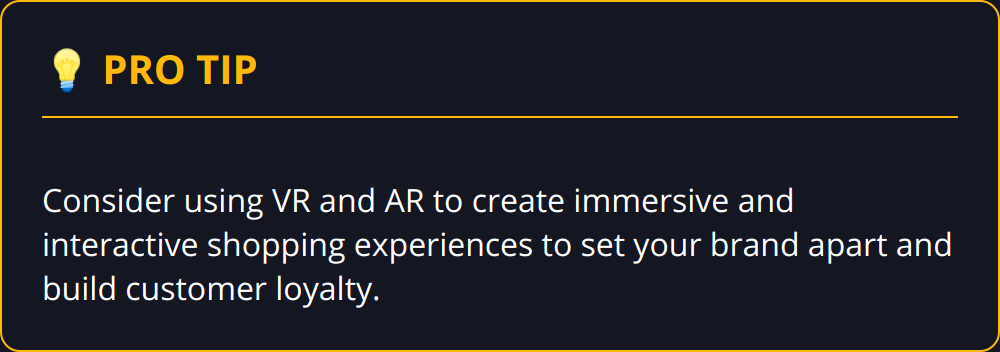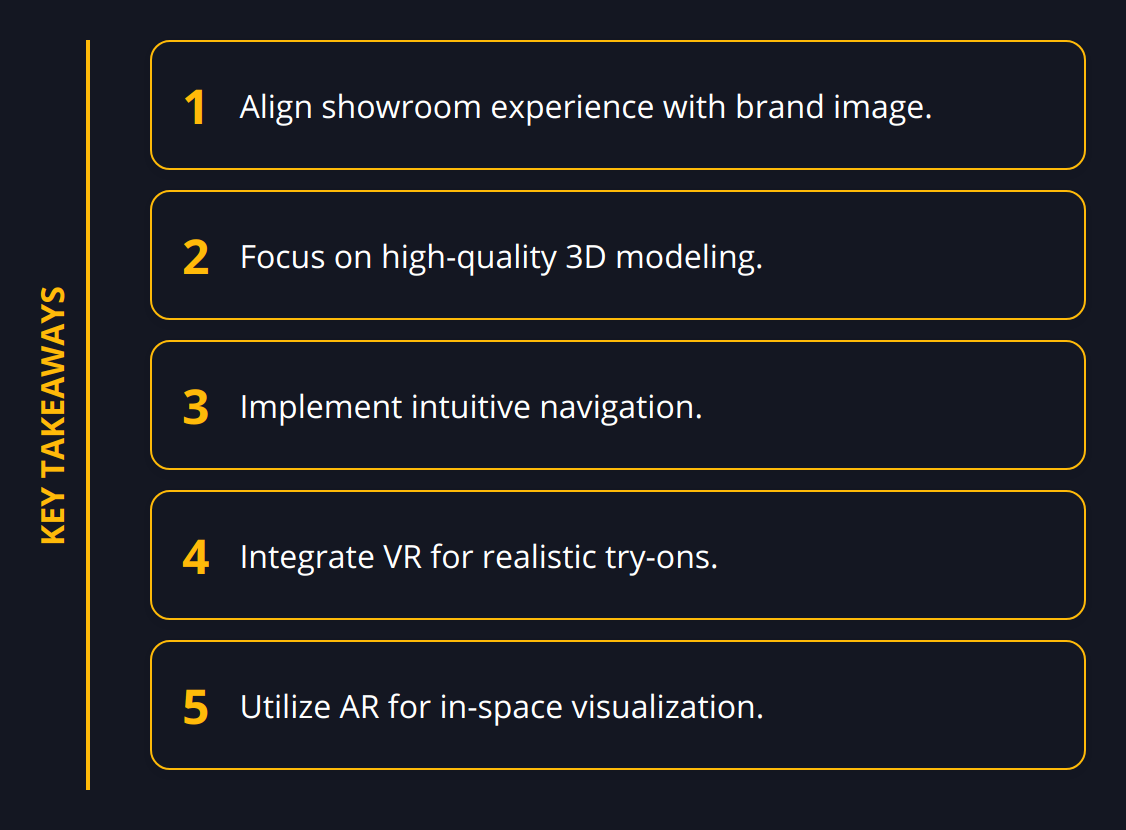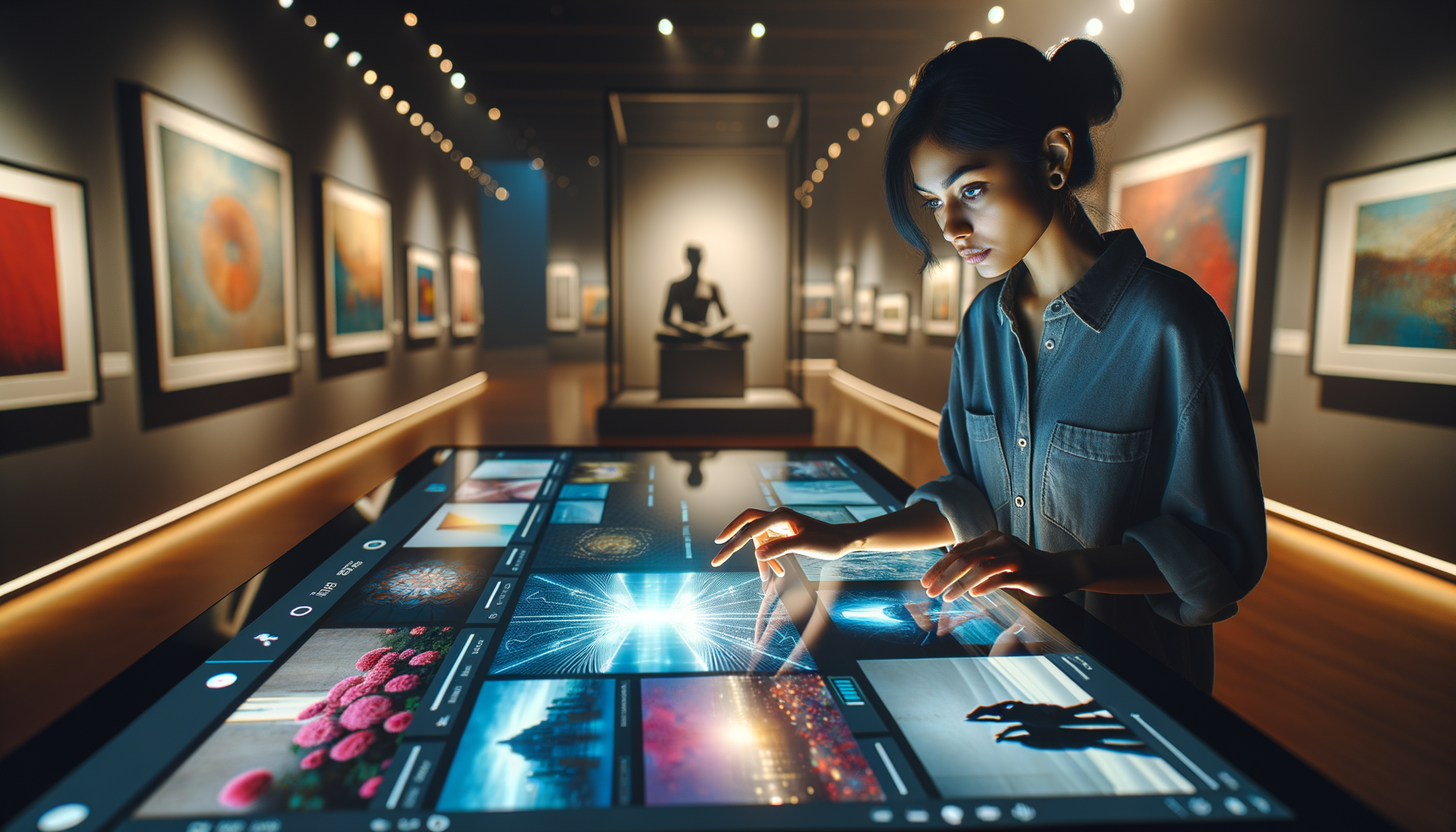We at Newroom Connect believe that the retail landscape is rapidly evolving, and 3D showrooms are at the forefront of this transformation. Offering immersive experiences that traditional showrooms can’t match, they represent a significant shift in how businesses showcase products and engage with customers.
Understanding the ins and outs of 3D showroom integration is essential for companies looking to stay ahead in the digital age. This post will guide you through the what, why, and how of bringing this innovative solution into your business strategy.
Why Use 3D Showrooms?
The emergence of 3D showrooms marks a revolutionary step forward for businesses eager to showcase their offerings. Far more than a digital catalog, 3D showrooms provide an interactive, virtual space where customers can engage with products in a way that’s both dynamic and intuitive. The experience closely mirrors that of a physical store but offers the convenience and accessibility of online shopping.

The advantages of 3D showrooms are abundant. They obliterate the limitations of physical space, allowing infinite inventory presentations without geographical barriers. Additionally, they enable clientele to view products from any angle, get a better sense of scale and texture, and personalize items in real-time—transforming the shopping experience into something truly bespoke.
Various industries are already capitalizing on 3D showroom technology. The furniture sector, for instance, has seen great success, offering customers the ability to place virtual items in their homes before making a purchase. Fashion retailers are not far behind, using 3D models to showcase garments in a way that static images never could. Automotive businesses have also embraced the tech, offering virtual tours of new models, allowing customers to customize and visualize their dream car effortlessly.

To integrate a 3D showroom into your business, consider these actionable steps:
-
Align the showroom experience with your brand image to create consistency across all customer touchpoints
-
Focus on high-quality 3D modeling to ensure your products are represented accurately and attractively
-
Implement intuitive navigation to make the customer journey within your 3D showroom seamless
-
Employ data analysis to understand how customers interact with your products, thereby optimizing the user experience
The future is vivid for 3D showrooms as we witness a steady increase in adoption. Indeed, augmented reality and virtual reality investments are burgeoning, with industries across the board recognizing the potential for increased engagement and conversion rates. As businesses constantly seek innovative ways to stand out, 3D showrooms are not just a flashy gimmick—they’re a strategic necessity.
Elevating Shopping with 3D Showroom Features
In the realm of digital retail, interactive product displays stand as a testament to the power of engagement. Successful 3D showrooms are built around the ability to not only view but also interact with products. Interactive displays let customers rotate, open, close, and even operate products in a virtual space, providing a sense of ownership and invigorating the shopping journey.

Here, virtual reality (VR) and augmented reality (AR) components take the shopping experience to uncharted territories. VR launches users into a fully immersive digital environment, perfect for virtual try-ons or tours of unbuilt real estate. Meanwhile, AR allows customers to visualize products in their actual spaces, such as placing a new sofa in their living room or testing how a pair of sunglasses might look on their face. When it comes to adding a luxurious touch to online shopping, VR and AR are no longer futuristic options—they’re today’s differentiators in creating compelling customer experiences.
Real-time customization options solidify a 3D showroom’s value proposition. Imagine changing the color of a car or the fabric of a couch with a simple click and seeing the results instantly. This feature not only captivates customers but also significantly shortens the sales cycle. It gives a clear visual representation of choices, preemptively addressing queries related to product variations.
If you’re aiming to reinvent your customer’s online experience, here are some practical tips:
-
Integrate VR try-ons for fashion items, enabling a close-to-real-life fitting room experience.
-
Utilize AR to help customers visualize products in their space to drive purchase confidence.
-
Offer a high degree of product interaction, such as configurable furniture elements that can match a customer’s interior design.
-
Employ robust analytics to track user interaction, gathering critical data to continuously enhance user experience.

Forward-thinking companies understand that 3D showroom features are more than just shiny new toys—they are compelling tools that drive sales and build brand loyalty. By leveraging interactive displays, VR and AR, and customization, businesses can provide experiences that resonate deeply with customers’ desires for engagement and personalization.
Remember, adopting such technologies is not about jumping on a trend; it’s about strategically expanding your business’s capability to meet and exceed modern consumer expectations. Those who recognize this are not only current but poised for future success.
Implementing Your 3D Showroom
Stepping into the world of 3D showrooms can be transformative for your business, but it requires strategic planning and execution. Your goal is to offer an immersive experience that captivates shoppers and reflects your brand’s essence. Here’s how to effectively integrate a 3D showroom into your business.
Assessing Your Business Needs
Before you leap into the 3D realm, a thorough evaluation of your business needs is paramount. What are your objectives with a 3D showroom? Are you aiming to amplify online engagement, increase sales, or offer a unique brand experience? Understanding these goals steers the direction of your integration process.
Consider your target audience and their online behavior. Determine the level of interactivity your customers desire. For example, if your clients are technologically savvy and aesthetic-driven, they would likely appreciate a feature-rich 3D environment. Conversely, if your clientele values simplicity, a 3D showroom that prioritizes ease of navigation over sophisticated tech may be more appropriate.
Evaluate the scalability requirements for your product lines. If you have a vast array of products, consider how you can effectively and systematically portray these in a virtual environment without overwhelming your visitors.
Selecting the Right 3D Showroom Software
Selection of software is a make-or-break decision for your 3D showroom. Options in the market offer a range of functionalities, from basic 3D rendering tools to full-fledged integration solutions that include VR and AR capabilities.
Opt for software that offers a balance of visual fidelity and user experience. It should effectively render your products in 3D without compromising loading times. Performance issues can deter customers, so prioritize smooth operation.
Interoperability with your current systems is also vital. The software should align with your eCommerce platform or website backend to facilitate a seamless transition between browsing and purchasing.
Additionally, take into account the support and training provided by the software vendor. This support ensures your team quickly becomes proficient in using and maintaining the showroom.
Developing and Launching Your Virtual Space
With the right software at hand, curating your virtual space becomes your next move. Begin by outlining the customer journey within the virtual environment. How will your customers explore the showroom? What path will they take, and how will products be discovered?
Design the space with intuitive navigation in mind, so visitors can move around effortlessly. Establish clear markers or waypoints inside the showroom to guide users towards different sections or featured products.
Developing high-quality 3D models of your products is critical. These models should be realistic and detailed to ensure an authentic experience. Remain vigilant about file sizes—overly large files can lead to latency and disrupt the user experience.
Consider the inclusion of interactive elements such as product customization, where shoppers can alter colors, finishes, or other attributes. These features can entice customers to engage more deeply with your products.
Before the official launch, conduct rigorous testing to troubleshoot and optimize. Ensure that the user experience is polished and that there are no technical glitches that could hinder the functionality of the showroom.
Remember, the launch of your 3D showroom is just the beginning. Monitor analytics closely to understand user behavior and make iterative improvements. Continually update your space to reflect inventory changes, seasonal campaigns, or to incorporate new interactive features that emerge as technology advances.
Here are a few actionable tips to enhance your 3D showroom:
-
Design with mobile optimization in mind, as a significant portion of your audience will likely access the showroom via smartphones.
-
Offer a brief tutorial or guidance for first-time users to familiarize them with the showroom’s capabilities.
-
Keep the virtual environment clean and uncluttered, to prevent users from becoming overwhelmed or lost.

To conclude, integrating a 3D showroom into your business is not just about adopting new technology—it’s about creating a captivating brand space that entices your audience in the digital era. With thoughtful planning and a focus on customer experience, your 3D showroom will become a cornerstone of your online presence.
Final Thoughts on Embracing Digital Transformation
The integration of 3D showrooms signals a monumental shift in retail and business overall, suggesting an irreversible trend towards interactive, digital customer experiences. Looking towards the future, we expect to see an accelerated adoption of 3D showroom technology, fueled by advancements in AR and VR. This progression will likely reshape consumer behavior, as traditional notions of shopping are redefined by the convenience and customization that virtual spaces offer.

Customers will become accustomed to the depth of interaction available in 3D environments, perceiving it as a standard rather than a luxury. While this digital transformation occurs, businesses must evolve to cater to an audience that values immersive experiences. They must also anticipate changes in consumer behavior, adapting to newfound preferences for online exploration and purchase of products.
At Newroom Connect, we empower clients to take part in this evolution by offering tools to create virtual trade fairs, showrooms, and e-learning platforms. Harnessing the power of these platforms translates into significant business opportunities, enhancing not only customer engagement but also analytics, lead generation, and sales.
The potential impact of fully embracing digital transformation through 3D showrooms is extensive. It results in stronger brand loyalty, a wider customer base due to the elimination of geographical constraints, and the offering of unique, memorable shopping experiences that can set a business apart from its competition.
Influential factors include the steady increase in the use of mobile devices for shopping and the heightened demand for personalized shopping journeys. These insights affirm the necessity for businesses to integrate 3D showroom solutions that are optimized for various devices and personalized to individual user preferences.
As we reflect on the importance of integrating 3D showrooms into business strategies, we at Newroom Connect encourage businesses to take a proactive stance. Begin your journey towards digital excellence and transform your online presence into an interactive hub that resonates with the modern consumer.
To explore how our platform can facilitate your business’s digital transformation, we invite you to learn more about our services. Whether it’s a virtual trade fair or a comprehensive showroom you’re looking to create, our platform is designed to meet your needs in this rapidly changing digital landscape.
Embracing the digital transformation presented by 3D showrooms promises not only to enhance customer experiences but also to pave the way for innovative business practices. With eyes on the horizon, we at Newroom Connect are excited to support your journey in harnessing 3D technology to reach new heights of success.


